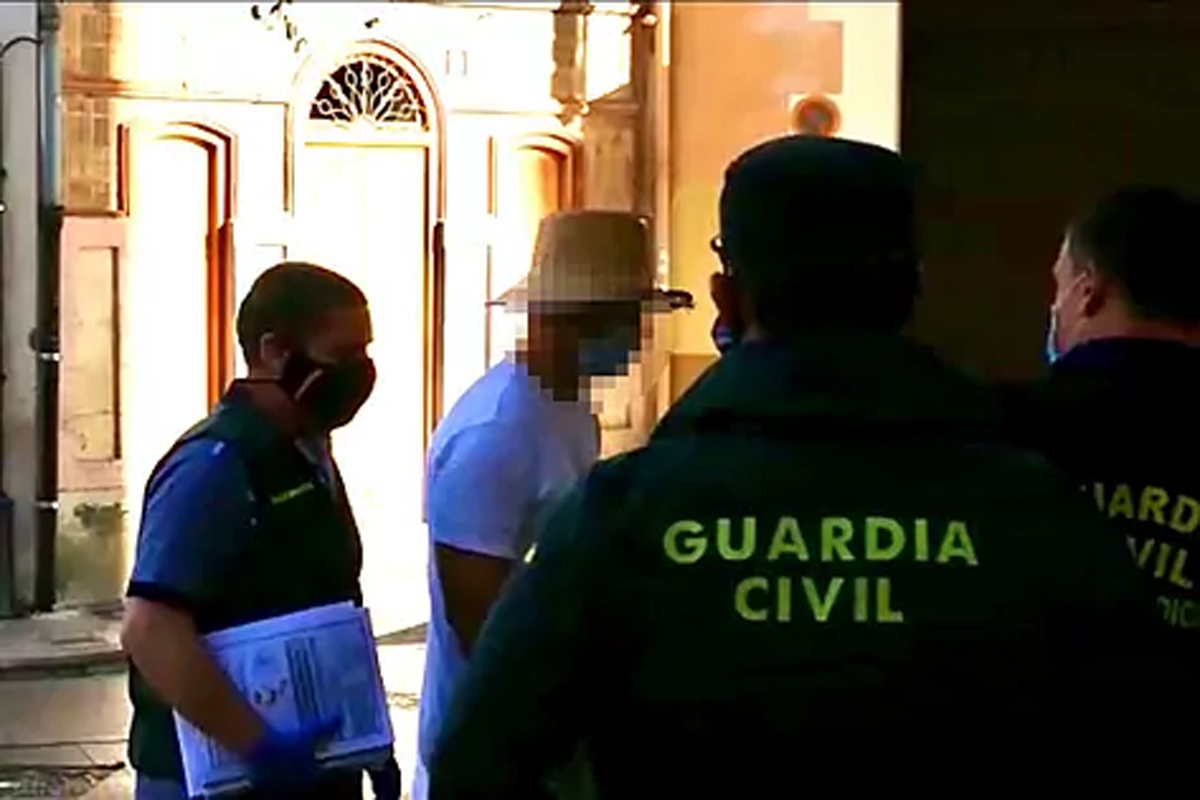- Valencia: Nacho Vidal is arrested for the death of a photographer in a ritual with poison toad
- In nature, poisons that heal
- Hallucinogen: the secret of the poison of the toad that came from Sonora
The porn actor Nacho Vidal was arrested last week on charges of reckless manslaughter, according to the Levante newspaper . The actor would be involved in the celebration of a mystical ritual based on the inhalation of toad poison fumes celebrated last July in Enguera (Valencia), during which one person died.
According to what has transpired, they inhaled vapors of the poison of the toad Bufo alvarius or Sonoran toad ( Incilius alvarius ), a semi-aquatic species with nocturnal habits that lives in the Sonora desert, between Mexico and the United States, and that usually hibernates underground between the months of September and April.
This animal secretes various psychoactive compounds, such as bufotenine and 5-MeO-DMT (5-methoxy-dimethyltryptamine), among others. "They are toxins of animal origin with great hallucinogenic capacity , " says Manuel López-Rivadulla, professor of forensic toxicology at the University of Santiago de Compostela. The use of this substance as a drug has been known for a long time, adds the specialist, who, however, points out that throughout his professional life he has not seen "any case" of poisoning from these compounds.
The consumption of substances such as bufotenine causes a picture of visual and sensitive hallucinations , adds López-Rivadulla, and can "be very dangerous" since it is a stimulant that generates alterations in the body, especially at the cardiac level, and can lead to death .
The scientist Raquel Aguilar, member of the Group of Antidotes of the Spanish Society of Hospital Pharmacy (SEFH) agrees with López-Rivadulla: "Bufotenine has digitalis properties and causes poisoning that can generate mortality from cardiac arrest".
A defense mechanism
"In order to defend themselves against their predators, many amphibians - frogs and toads as well as newts and the like - have glands that secrete toxic substances, with greater or lesser severity . If you touch a toad and put your hand to your eyes or the mouth, you already suffer a reaction to the toxic. If another animal sucks the toad, it will reject it because the taste is very unpleasant. Toads also have other types of glands that allow them to stay moist, "explains Oscar Soriano, chief scientist of the CSIC in the Department of Biodiversity and Evolutionary Biology of the National Museum of Natural Sciences (MNCN).
"But there are other species, such as arrowhead frogs, that secrete a poison that causes death if it enters the bloodstream. The indigenous people of Colombia use it to poison arrows and hunt monkeys and other animals with them," he adds. The most widely used for these purposes is the golden frog, in serious danger of extinction.
"The toads that live in the Sonoran desert secrete their venom with their parotid glands. There are shamans who use it because they produce an altered state of consciousness . They say that the hallucinogenic effect it causes them to see things that can happen to you or you It goes back to previous times. Its effect is similar to that of ayahuasca ", a mixture of plants that come from America and which is also known as the rope of the dead or the hangman's noose,
These hallucinogenic properties, says Soriano, are not found in the substances that the toads that we find in Spain secrete, although theirs are also irritating and toxic to a different extent, depending on the species.
Often, the consumption of these substances is framed within mystical rituals for supposed therapeutic purposes. Under the guise of alternative or ancestral therapies, the consumption of psychoactive substances is promoted , arguing that there are no health risks and there are multiple benefits. However, toxicology experts are clear that these drugs are dangerous and can be life-threatening for those who use them.
In accordance with the criteria of The Trust Project
Know more- Science and health
- science
FutureHumanity at the precipice: "There is a one in six chance that we will become extinct in 100 years"
Par's World in ParDavid Quammen: "The next virus is already on the way. Start preparing yourselves"
Covid-19A study confirms that cats can become infected with coronavirus and infect each other

